A guide to Michigan's native nuts: How to harvest, prepare unique varieties
Looking forward to some roasted chestnuts during the holidays? Michigan features several wild nut types ready for harvesting this fall.
A variety of nuts grow on trees in the state and can be cultivated for harvesting, but the process from harvesting to ready to eat can take several weeks. Let's take a closer look at Michigan's nut varieties and what it takes to prepare them to be edible.
Foragers should research ahead to ensure a safe, enjoyable experience, said Rachel Coale, Michigan Department of Natural Resources spokesperson.
"Know your ID before you go out, know what you're looking for and proper preparation and check the land-use rues where you're going," Coale said.
Black walnuts
Black walnut trees grow up to 50 to 75 feet, with dark bark and compound leaves. The tree produces an annual fall harvest of walnuts, enclosed in a green husk. The trees' wood is used for making furniture and other materials.
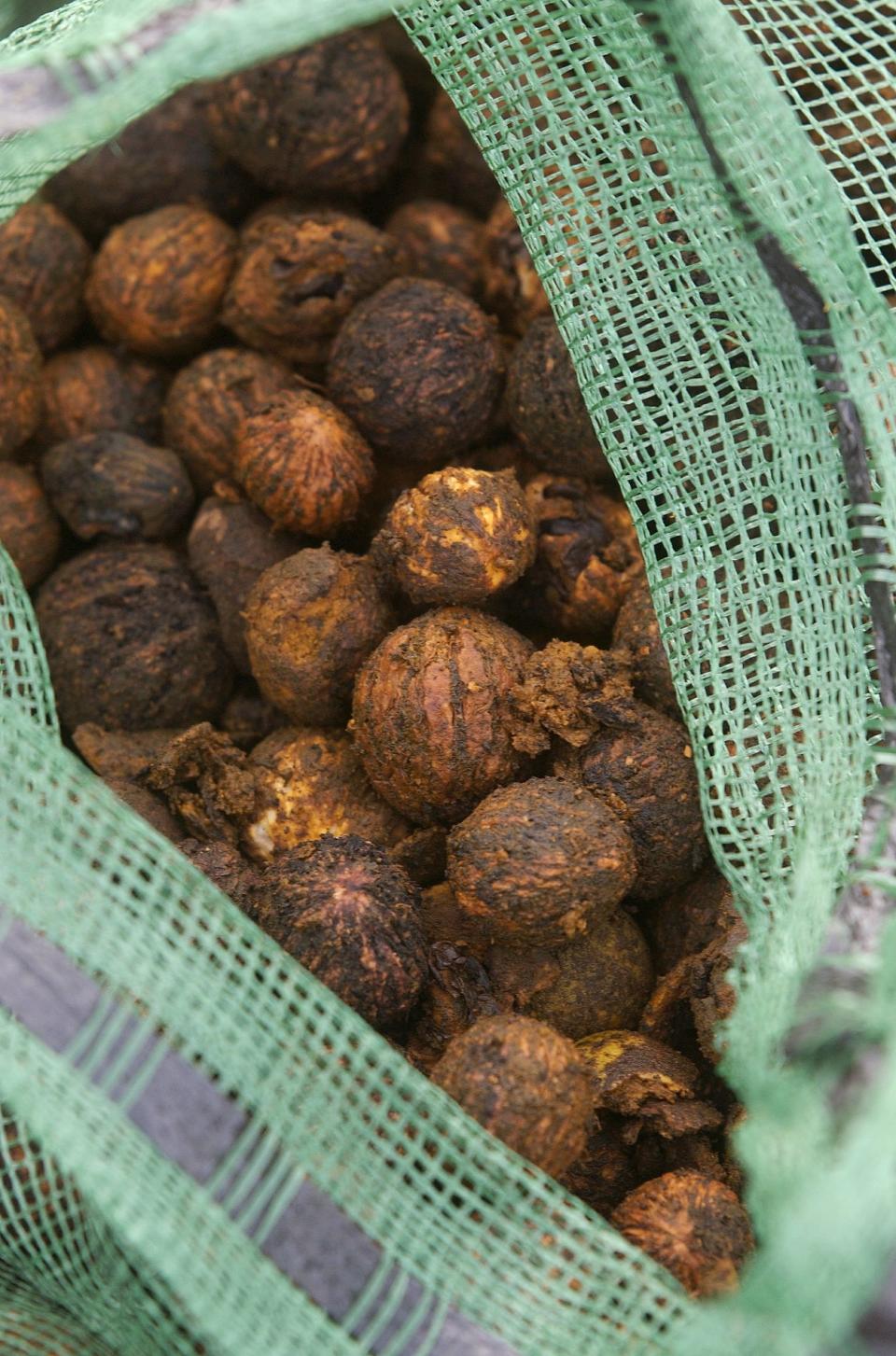
When harvesting the nuts, pickers should wear gloves to protect their hands from the walnuts' juice. Collect the nuts that fall on the ground from the tree and prepare them. This includes washing and drying the nuts, curing them so the black walnuts will be ready to crack and eat.
American chestnut
This tree grows between 40 to 90 feet and has oval-shaped leaves. It produces edible chestnuts inside a spiky green shell. Though once prevalent in the state, this tree experienced depopulation from chestnut blight, leading to its endangered status.
While wild chestnuts remain rare in the state, Michigan features a growing cultivated chestnut industry, said Dan Guyer, Michigan State University professor emeritus and longtime chestnut researcher.
"The supply is not meeting the demand, and right now the partnership between Michigan State University and the industry is outstanding," Guyer said. "We work together hand-in-hand in both the field and in facilities and in information and in travel and conferences, it's just fantastic and we're all one team."
The chestnuts can be used to produce flour and gluten-free beer, in addition to being edible raw or cooked.
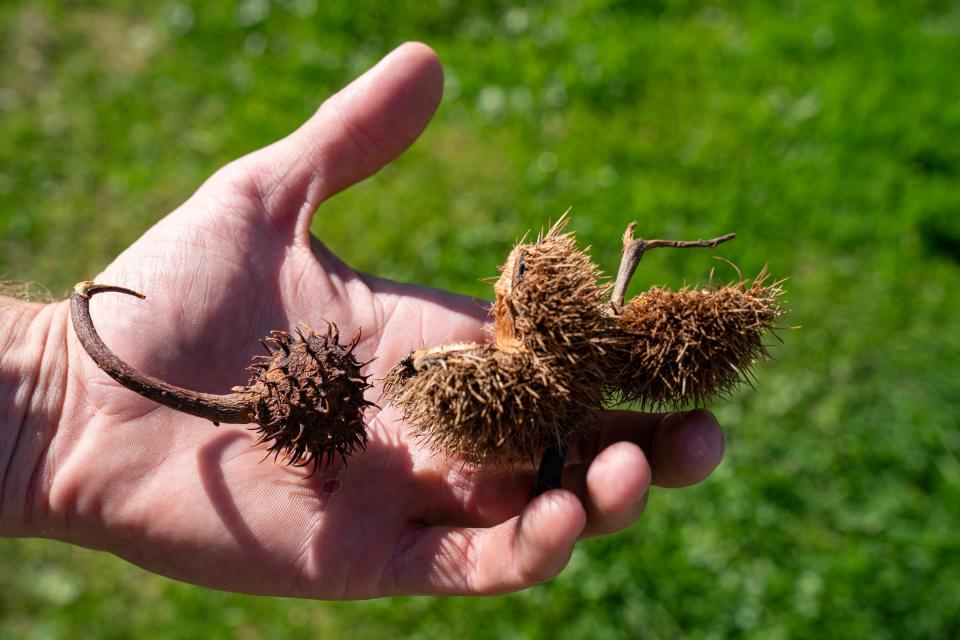
Gather the chestnuts as they fall from the trees, and make sure to wear gloves when removing the nuts from the outer shell. The nuts should then be washed and dried before storing in a cool environment.
Horse chestnuts
Native to southeastern Europe, the horse chestnut tree produces bitter, toxic seeds. The tree grows from 50 to 75 feet tall and produces white flowers in the spring. Horse chestnuts are poisonous and not edible.
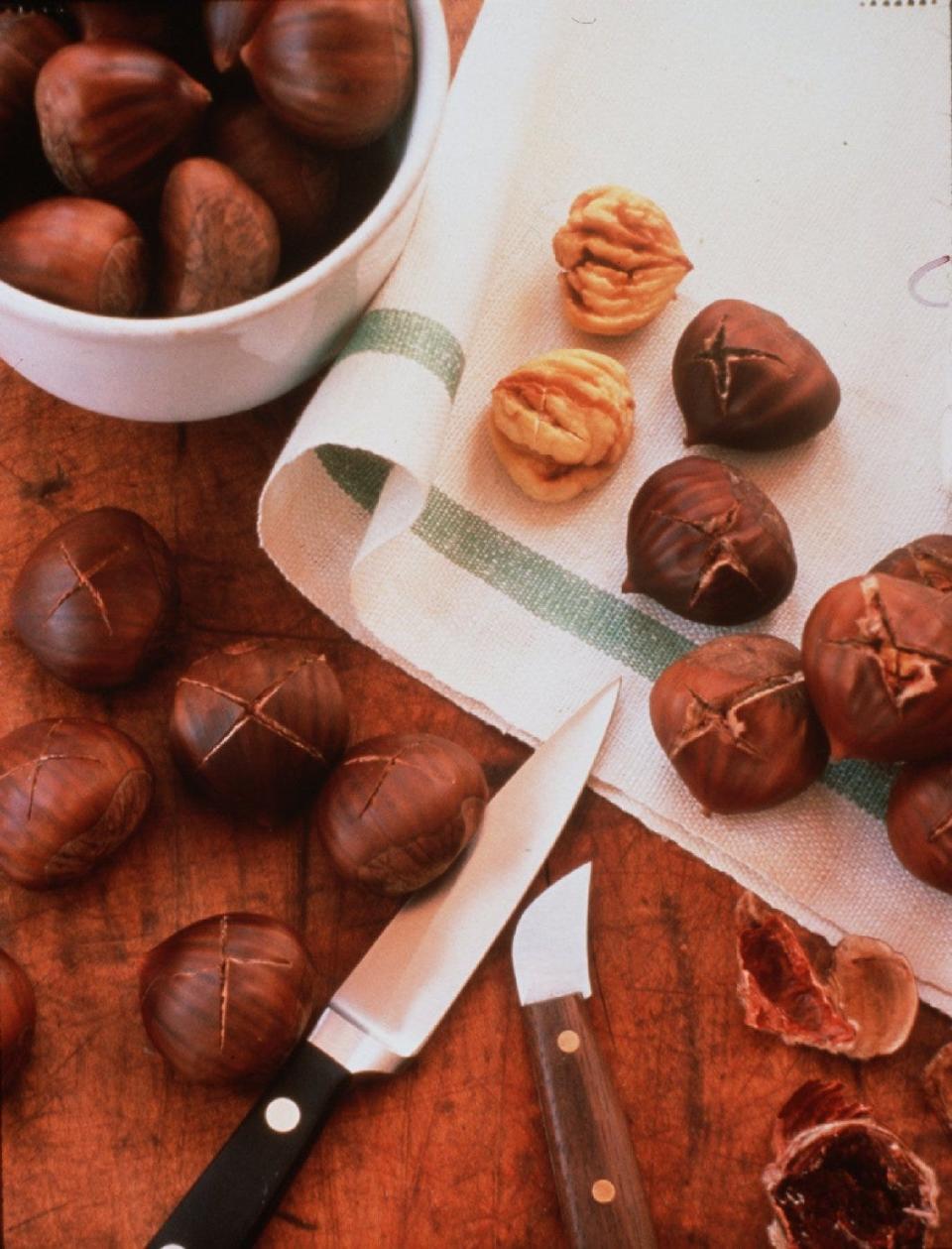
The extract of horse chestnut seeds can have medical uses to prevent swelling caused by poor blood circulation. This stems from the horse chestnuts' blood-thinning properties.
Shagbark hickory
This tree features gray bark and compound leaves made of five leaflets. The tree produces edible hickory nuts enclosed in a thick husk. This nut can serve as a replacement for pecans in many popular fall recipes.
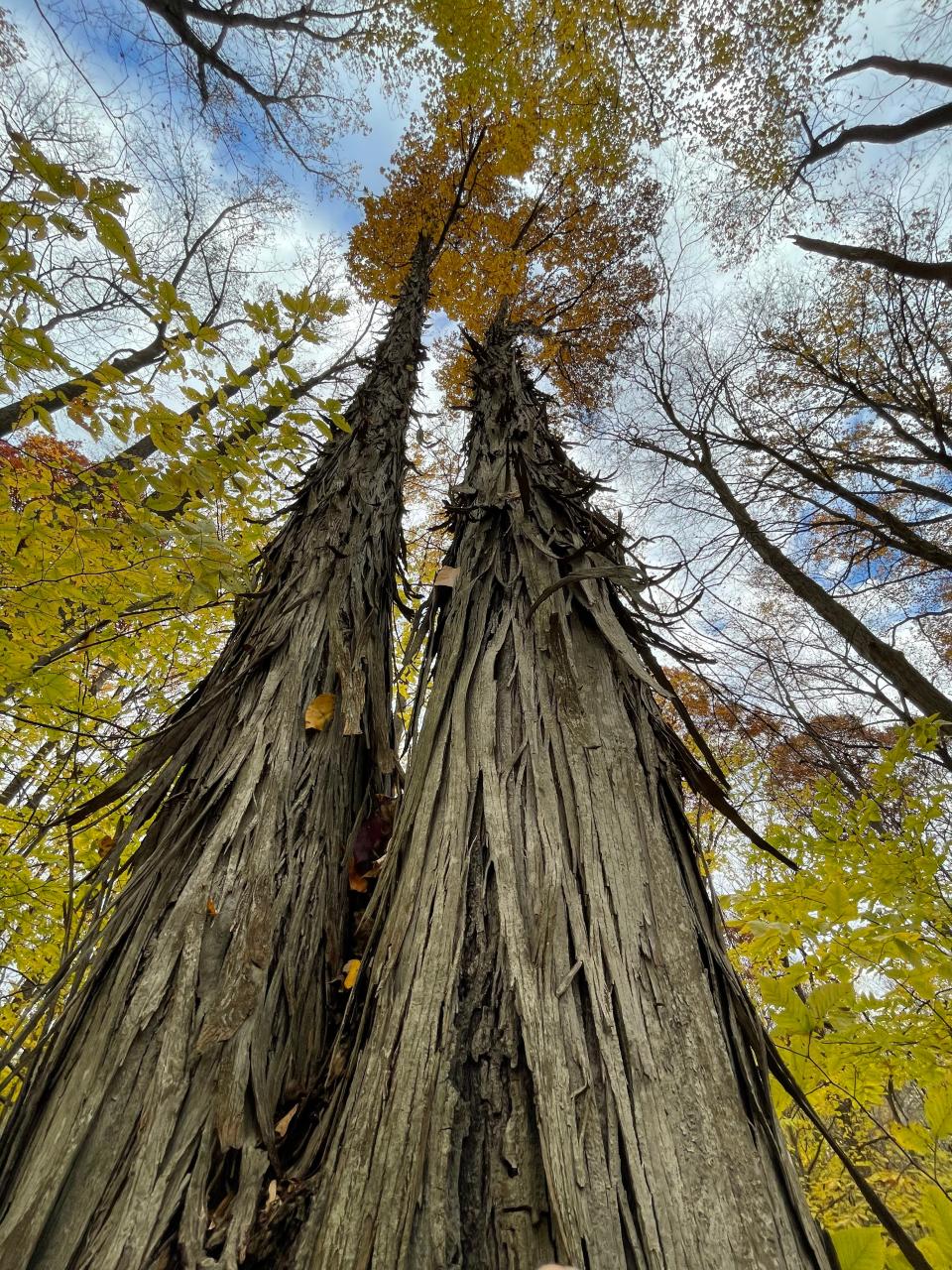
Collect these nuts off the ground after they fall from the trees, no gloves needed. Remove the husk and wash and dry the nuts.
Butternut
This tree produces butternuts, also known as white walnuts. Part of the walnut family, the medium-size tree can typically live up to 75 years. The edible butternuts are sweet and oily, oval-shaped and enclosed in a shell.
To harvest these nuts, collect the butternuts from the trees, remove the shells, wash and dry the nuts. The butternuts will then need to cure over the next few weeks before they can be prepared for storing in a cool environment.
Fungal disease wiped out around 90% of the state's butternut trees a few years back. Environmental officials have since marked its risked status in the U.S. and Canada.
American hazelnut
Smaller trees, the American hazelnut tree grows as a shrub between 20 to 25 feet. The tree produces edible hazelnuts, with the shell covered by a husk.
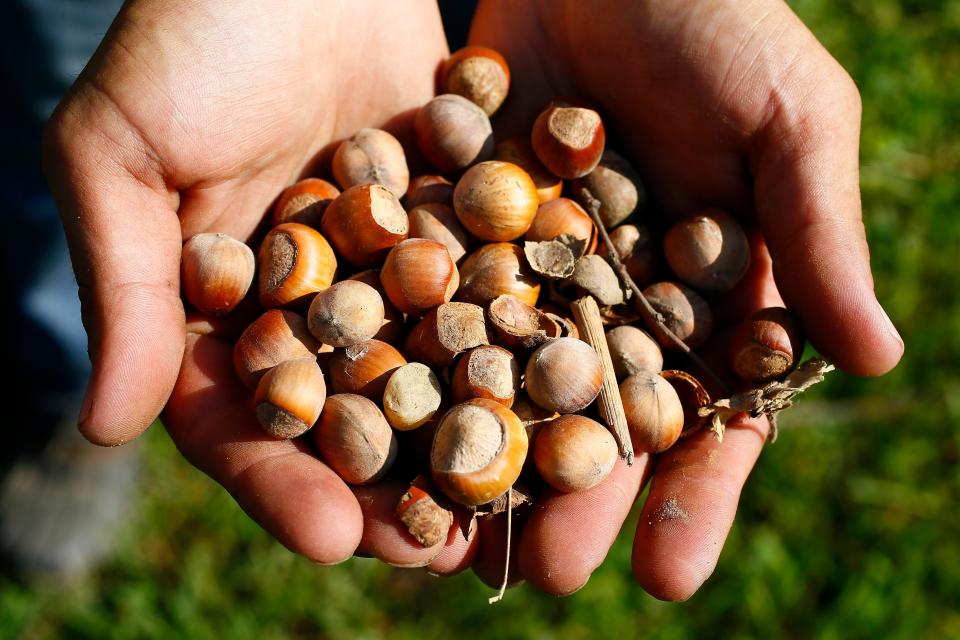
Enclosed in a green husk and wrapped in involucre leaves, harvesters can pick the hazelnut clusters from the shrubs. Dry the nuts in a thin layer, then remove the husks wearing gloves. The hazelnuts will then be ready to crack and eat, or can be prepared roasted.
American bladdernut
This shrub can grow between 6 and 12 feet, featuring predominantly gray bark and leaves comprised of three leaflets. The plant produces edible seeds, enclosed in a capsule that develops over several months through pollination.
Though this tree does not produce edible nuts, it produces edible seeds similar in size to popcorn kernels. The seeds can be eaten raw or cooked, they should be collected from the trees and removed from their shells prior to eating. The seed also contains an edible oil that can be used for cooking.
Acorn
Michigan features a variety of oak trees producing acorns. White acorns are more popular among humans due to their sweet taste. The edible nut can be used for soups, flour or nut butter. White acorns can be eaten raw or cooked by boiling or roasting. The Michigan DNR is getting reports of high volumes of acorns in the state this fall, Cole said.
Harvesters can collect acorns that fall from oak trees, then shell the nuts either by hand or with a nutcracker or similar tool. The acorn nuts should be washed and dried before use, then stored.
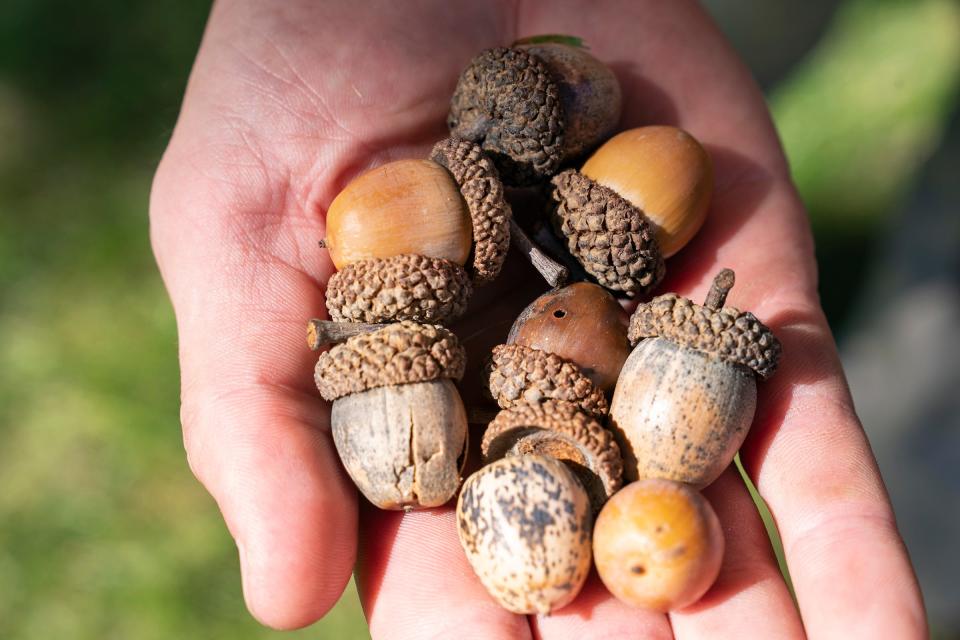
Preparing the nuts
For those foraging for nuts in the state, there are several key parts to the process. Harvesting and preparing wild nuts can pose quite a challenge, including foraging in the wild and weekslong curing of nuts once harvested.
Once harvested, nuts must be washed and dried and removed from their shell, and for some types of nuts, first from an exterior husk or other casing. This process can take several weeks, as the nuts may need time to dry and cure before de-shelling.
Removing nuts from their shells can be difficult, and various methods include using tools such as a nutcracker, hammer, or a board. Similarly, removing the husks or other outer casings can be done using a tool such as a hammer, or by stomping on the nuts with your feet or driving over them with a car's tires. Once the nuts are washed, dried, de-husked, and de-shelled, they can either be cooked or prepared raw. Nuts should be stored in airtight containers or frozen, depending on nut type and preference.
This process varies by type of nut. For example, black walnuts are particularly challenging to de-husk and de-shell, requiring the use of stronger tools such as cracking machines or car tires. Other nuts, such as hazelnuts, however, are easier to de-husk, such as by drying the nuts in the husk and then removing the husks by hand, as they will fall off more easily once dried. Each type of wild nut tree produces nuts with varying methods of removal and degrees of difficulty in preparing for human consumption.
This article originally appeared on Detroit Free Press: A guide to Michigan's native nuts: How to harvest, prepare varieties

